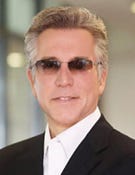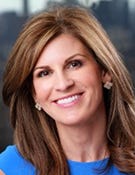SAP’s Cloud Boss Latest to Leave the CompanySAP’s Cloud Boss Latest to Leave the Company
Longtime SAP executive Robert Enslin leaves after two years heading up cloud efforts as the enterprise software giant continues restructuring.
April 9, 2019

By Jeffrey Burt

Robert Enslin
Enterprise software giant SAP, which like competitors such as Oracle has staked a lot of its future on its ability to shift a lot of its business into the cloud, will now have a new executive overseeing those cloud efforts after the resignation of 27-year SAP veteran Robert Enslin.
Enslin, who was president of SAP’s Cloud Business Group and a member of the executive board, is the latest in a series of executive departures from SAP in recent months as company officials look to accelerate SAP’s transformation into a more digital platform vendor. Other high-profile executives exiting SAP include executive board member Bernd Leukert in February and Bjoern Goerke, who left earlier this month after three decades with SAP, the last two years as CTO and president of SAP’s Cloud Platform unit.
The restructuring also is leading to more than 4,000 job cuts throughout the company this year in what officials said is a drive to improve efficiencies and put SAP in position to address future challenges. SAP had about 96,000 as of 2018.
Here’s our list of channel people on the move in March. |

SAP’s Bill McDermott
Enslin spent the past two years as president of the Cloud Business Group, helping to drive growth in SAP’s cloud business that included cloud revenue surpassing traditional software revenue for the first time in 2018. According to a recent letter from SAP CEO Bill McDermott to stakeholders, the cloud business last year “become a main growth driver in our business,” increasing 38 percent over 2017.
SAP officials noted in an end-of-year integrated report that cloud subscription and support revenue increased 32% while cloud and software revenue grew 5%. Officials said that in SAP’s fiscal year 2018, cloud backlog jumped 30%, to almost $11.3 billion by the end of the year, and that cloud and software order entry grew 14%.
The company, which has more than 425,000 customers, is shooting for three times the cloud revenue by 2023.

SAP’s Jennifer Morgan
Enslin’s role leading the Cloud Business Group will be filled by executive board member Jennifer Morgan, a 15-year SAP veteran who most recently oversaw SAP’s strategy, revenue and customer success as president of SAP’s Americas and Asia-Pacific/Japan regions. She worked with Adaire Fox-Martin leading SAP’s Global Customer Operations business. Fox-Martin will become the sole president of Global Customer Operations.
In announcing Enslin’s resignation, McDermott thanked the executive for his work at SAP and said having Morgan in place “will help us take SAP to the next level. Our market-leading core ERP and high-growth cloud application portfolio make SAP a rarity in the enterprise software industry. This transition gives us a clear path to continue simplifying the company. SAP’s leadership team will drive greater operational efficiency, faster time to market, higher product quality and superior market fit, all while significantly…
…improving margins.”

Enderle Group’s Rob Enderle
The ongoing changes at the executive level should be an indication for customers and channel partners that SAP officials are having difficulties getting a strategy in place, according to Rob Enderle, principal analyst with The Enderle Group.
“They are struggling with a changing market and lack the needed strategic vision to deal with it,” Enderle told Channel Partners. “Lots of executive churn generally is an indicator that the CEO and board have lost their way, so you are seeing the collateral damage from a lack of effective strategic vision.”
As the industry becomes more cloud-centric, SAP finds itself trying to adapt in order to compete with rivals like Oracle and Salesforce.com. Oracle, though late to the cloud game, is investing money and resources to build out its Oracle Cloud with the goal of not only being able to host its large customer base that is looking to migrate its Oracle workloads to the cloud, but also to be a public cloud player that can compete with the likes of Amazon Web Services (AWS), Microsoft Azure and Google Cloud Platform.
Salesforce was born as a software-as-a-service (SaaS) business and has a broad portfolio of cloud-based enterprise applications.
SAP officials tout the company’s cloud platform as a place where customers can leverage cloud-native technologies and multicloud strategies that can take advantage of the cloud infrastructures of the major hyperscalers. The platform offers an array of capabilities that range from analytics, artificial intelligence (AI) and machine learning, and blockchain to data management, containers, DevOps and the internet of things (IoT).
For a company like SAP, its best way forward in a cloud-focused world may be though partnerships with the major public cloud providers rather than trying to go it alone, according to Enderle.
“A cloud provider tends to be a generalist and SAP isn’t that,” he said. “They can certainly run in the cloud but the largest and most powerful companies tend to have broad skills which help in understanding the needs of a broad market. SAP isn’t really set up to compete here and partnering with firms like Amazon and Microsoft would provide far greater returns than competing with them as a result.”
Overall, SAP lacks “the needed breadth and scale, so for them it should be all about partnerships and alliances so they retain their differentiating focus but still can operate in the cloud. This is a relationship — not a product — game and product companies often miss this critical nuance.”
Read more about:
AgentsYou May Also Like
